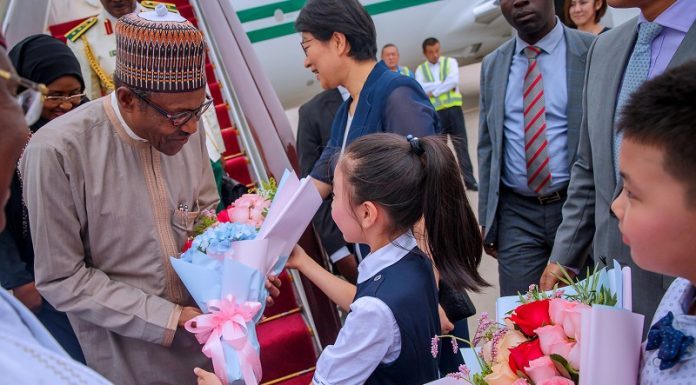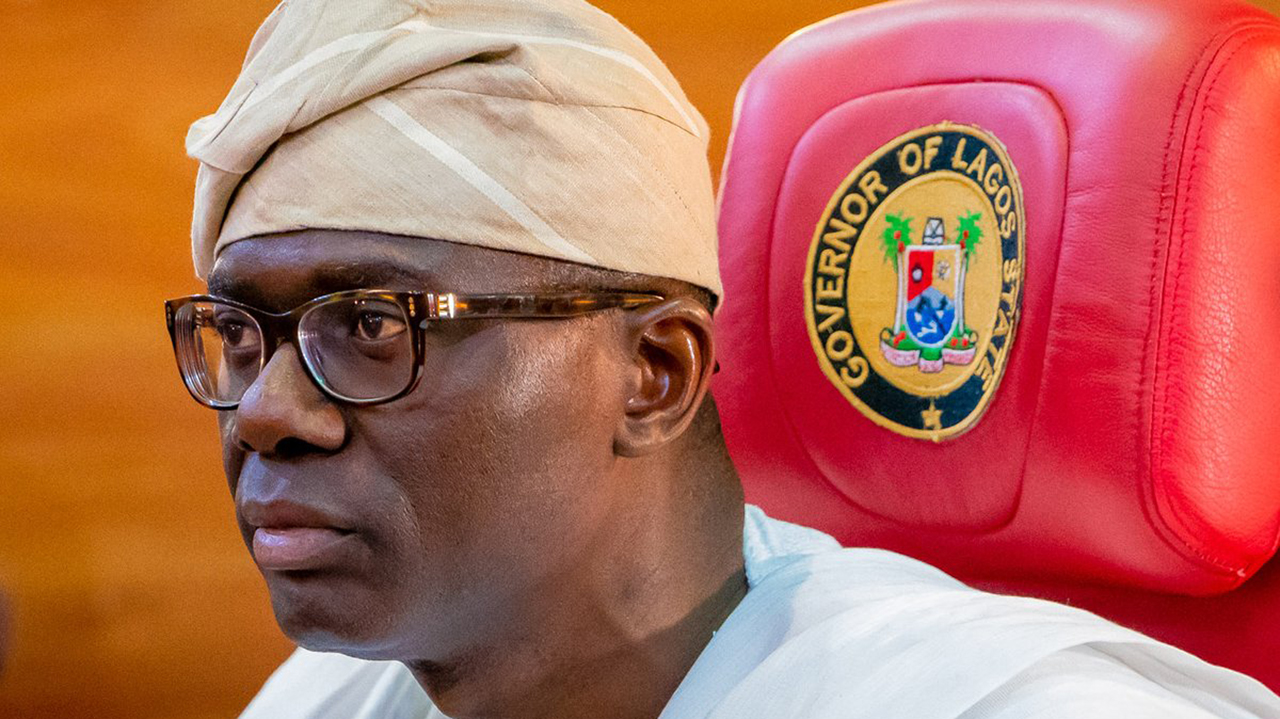One of the preplanned 25 Memoranda of Understanding (MoUs) to be sealed by visiting President Muhammadu Buhari in China during the ongoing Forum of China and African Countries (FOCAC) includes the One Belt One Road Initiative (OBOR).
Earlier in 2013, the Chinese leader, Xi Jinping proposed the initiative of building the Silk Road Economic Belt and the 21st-Century Maritime Silk Road, with a view to integrating the development strategies of partnering countries.
Business Hilights gathered that the projects planned under OBOR could help employ short-term constructions crews, provide necessary infrastructure for the movement of trade (highways, ports, airports) and spur employment in trade-related industry and services.
China had in April this year, urged Nigeria to take advantage of its OBOR policy, to fast-track its economic growth and national development.
It said OBOR was mutually beneficial to both countries and – by providing better access to Chinese expertise – would aid Nigeria’s development of critical air, land, water and railway infrastructure.
Explaining more in Lagos at a symposium organised by the Nigeria-China Friendship Association (NICAF), in collaboration with the Confucius Institute (CI) at the University of Lagos, a Chinese expert and a don with The Confucius Institute, Prof. Jongjing Wang averred that Nigeria will gain more from the initiative at the long run if it remained committed.
However, according to Dr. David Denoon, a professor of politics and economics at New York University, and director of the NYU Center on U.S.- China relations, China may have some economic success with One Belt One Road depending on the type of project, despite a mixed track record in Africa, with some current projects failing and a soft power push back by some African governments and populations.
Dr. Michael Clarke also points out the risk that development has had the reverse result of aggravating already discontented populations and such negative results are predictable when the development efforts do not take into consideration local people’s attachment to their historical homelands, to their cultural traditions (including religion), and to their language.
One belt one road, also known as the Belt and Road Initiative (BRI) is a project initiated by the Chinese President Xi Jinping. Its objective is to build trade routes between China and the countries in Central Asia, Europe and Indo-Pacific littoral countries. (Littoral countries means situated on the shore of Indian and the Pacific Ocean).
OBOR/ BRI is a network of roads, railways, oil pipelines, power grids, ports and other infrastructural projects meant to connect China to the world.
It was announced in the year 2013 with an objective to rejuvenate the ancient trade routes connecting Asia to Europe. (known as the Silk Road or the Silk Route).
Business Hilights gathered that the OBOR initiative has been bifurcated into two parts:
The ‘belt’ refers to the ‘Silk Road Economic Belt’ which is land based. It will connect China with Central Asia, Eastern and Western Europe.
The ‘road’ refers to the ‘21st Century Maritime Silk Road’ which is sea based. It will connect China to South-East Asia, Africa and Central Asia.
Six economic corridors and one maritime route have been proposed under the OBOR:
1. New Eurasian Land Bridge. (connect Western China to Western Russia)
2. China – Mongolia – Russia Corridor (North China to Eastern Russia via Mongolia)
3. China – Central Asia – West Asia Corridor (Western China to Turkey via Central and West Asia
4. China – Indochina Peninsula Corridor (Southern China to Singapore via Indo-China)
5. China – Pakistan Corridor (South Western China to and through Pakistan)
6. Bangladesh – China – India – Myanmar Corridor (Southern China to India via Bangladesh and Myanmar)
7. Maritime Silk Road connecting Coastal China to the Mediterranean via Singapore-Malaysia, the Indian Ocean, the Arabian Sea and the Strait of Hormuz.
Analysts say OBOR is an ambitious project and it encompasses almost 65 countries. China has planned around $1 trillion of investment in various infrastructure projects by providing loans to the countries involved at a low cost.
OBJECTIVES OF CHINA BEHIND THIS INITIATIVE
China wants to develop international clout by expanding its influence. It feels isolated as it is not a part of G7 countries. Hence, OBOR will enable China to exert greater regional influence.
The GDP of China has slowed down in the recent years. China expects the OBOR initiative to boost its GDP by boosting trade. China will find new markets for its product.
The Chinese model of growth had been investment led. It has led to excess capacity. This excess capacity will be channelised effectively if China ventures into newer markets for its export.
It will boost Yuan’s usage amongst the countries and strengthen the role of Yuan as an international reserve currency.
It will fix regional disparities in China. The Eastern and Southern regions of China have lagged behind in terms of growth. These regions will be now better connected to the world.
CHALLENGES FACED BY CHINA
Some of the countries involved have a very low sovereign credit rating. These countries with low credit-worthiness might not be able to service their debt. This would affect China financially.
Countries in middle-east are unstable and possess a risk to the OBOR initiative.
There might be a political backlash in poor countries if they feel they are being exploited by China. This backlash has already occurred in countries like Srilanka, Myanmar, Africa, when they could not service their debt. The investment made by China in these countries did not generate enough profits. Hence, there might be a problem of poor countries left laden with massive debt.
BENEFITS FOR THE OTHER COUNTRIES INVOLVED
It could bridge the infrastructural deficit in developing countries like Afghanistan and Pakistan
These countries could see a boost in their GDP with increased investment and increased trade.
But, we should not be too optimistic about the success of OBOR as Chinese investments had led to political backlashes in the past. Charges of environmental degradation and labour exploitation were levelled against them.
Risky as some analysts will see it, the loans might be cheap but they come with riders. The countries have to source material from China which results in an increase of cost of borrowing.
Besides, there are fears that the poor countries will be able to benefit from greater trade as they already run a huge Trade deficit with China.
INDIA’S POSITION
India has boycotted the OBOR initiative due to the following reasons:
China-Pak Economic Corridor (CPEC) passes through the Indian Territory (Pak-occupied Kashmir). It trespasses India’s sovereignty and territorial integrity.
India has dominance in the Indian Ocean and is worried about the Chinese investment in the Maritime route through the Indian Ocean.
Whereas pundits say the OBOR initiative lacks transparency, there are issues that India has much to lose out in terms of economic boost through greater integration with other countries. India also risks isolation as all its neighbouring countries (apart from Bhutan) are a part of this initiative. To mitigate the damage, it should build ties with other countries and increase its spending on infrastructure.









